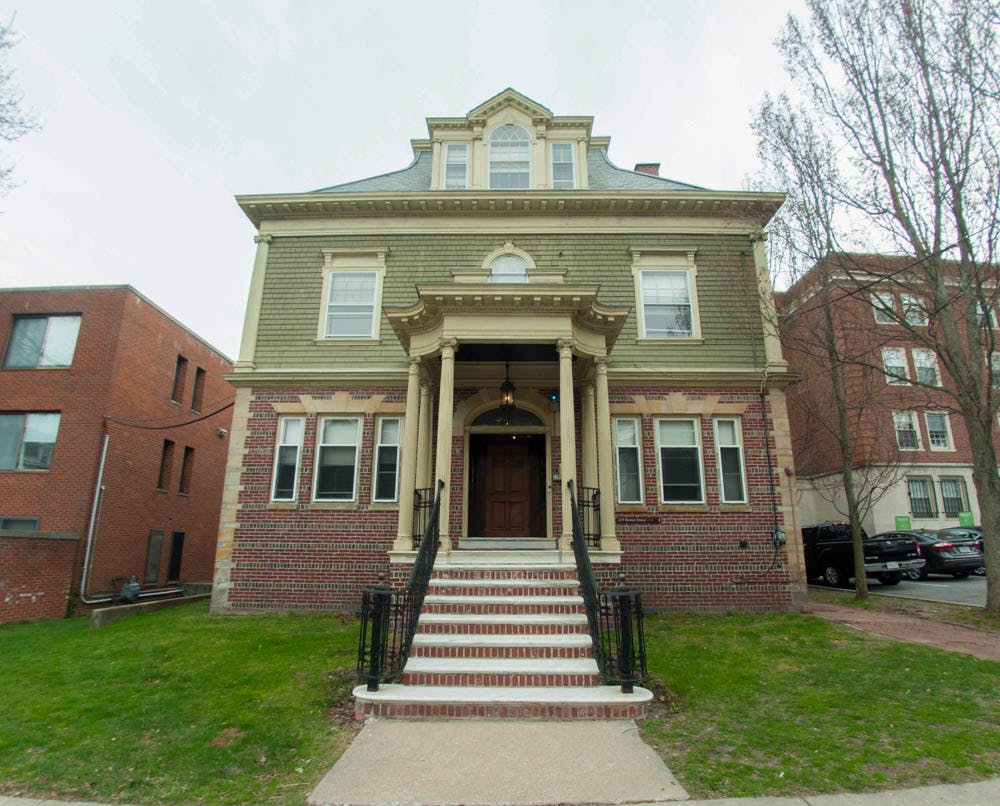“Brown was the first university to provide support to students in recovery back in 1977 and is cited as being a leader in the collegiate recovery field,” said Dean for Chemical Dependency Shannon O’Neill. In this tradition, the University will begin offering program housing for substance-free students in Donovan House this fall.
After talking to many students in recovery and students who are substance-free for other reasons — such as personal preference, family history or religion — O’Neill said she noticed a lack of substance-free dorms.
“Twenty percent of Brown students are sub-free … (yet) this is an identity at Brown which is not acknowledged,” O’Neill said. The new program house will provide a space and community exclusively for substance-free students. “Sub-free peers have felt silenced and not able to speak about how uncomfortable they are to be around other people’s substance use,” she added.
Donovan House will occupy the Plantations House building at 219 Bowen Street. In future years, Donovan House can be expanded to accommodate all students who apply for substance-free housing, O’Neill said.
AJ Davis ’20, a future resident of Donovan House, looks forward to living in a sober space. He currently lives on a substance-free floor in a dorm, but he interacts with substance-using first-year students who were placed in the dorm because of housing shortages. Seeing intoxicated people in the halls and smelling marijuana when trying to stay sober “can be very discouraging and difficult,” Davis said.
Even the slightest trace of substance use — from hearing drunk people to smelling mirijuana — can be traumatizing to those who might have experienced familial trauma or are in recovery, said Natalie Zummer ’19, program coordinator of Donovan House. Donovan House “is important for creating a community and a supportive network of people that would be more powerful than a floor,” Zummer said.
Applications for the house were very selective this year — 70 people applied, but only 16 were selected, said Kiana Phillips ’19, program coordinator and residential peer leader of Donovan House. To select students, the coordinators conducted interviews and chose students who were in recovery, who had prior experiences with alcohol that impacted their safety, who are substance-free for religious reasons or who expressed enthusiasm about living in a substance-free house, O’Neill said.
During the interviews, the interviewers ensured that “sub-free identity is deeply rooted in the students” so that the residents won’t be prone to substance use, Zummer said. If students disobey the house’s guidelines, they may be removed from the house, she added.
If a student breaks the policy of sobriety, the house will make a communal decision on that resident’s future — whether they will stay in or leave the house, Phillips said.
“We want to think about why the person made that decision and see what can we do about it. At the end of the day if that person decides to drink, it can be triggering to everyone else and not be fair,” Phillips said.
The residential peer leaders will also refrain from substance use, said Phillips and Zummer. “There shouldn’t be an RPL who isn’t sub-free when they are supporting sub-free students,” Phillips said. “RPLs have to be held to the same standards.”





